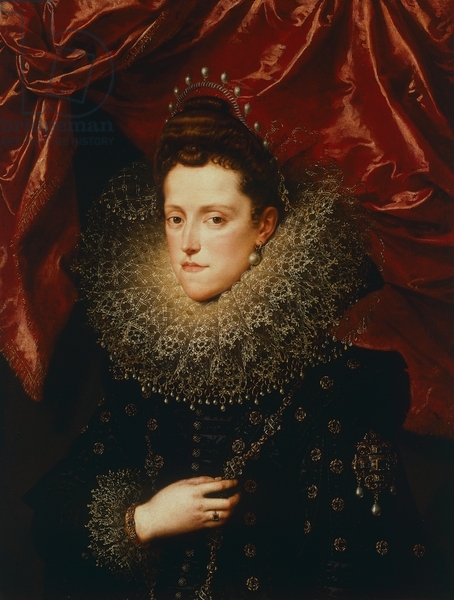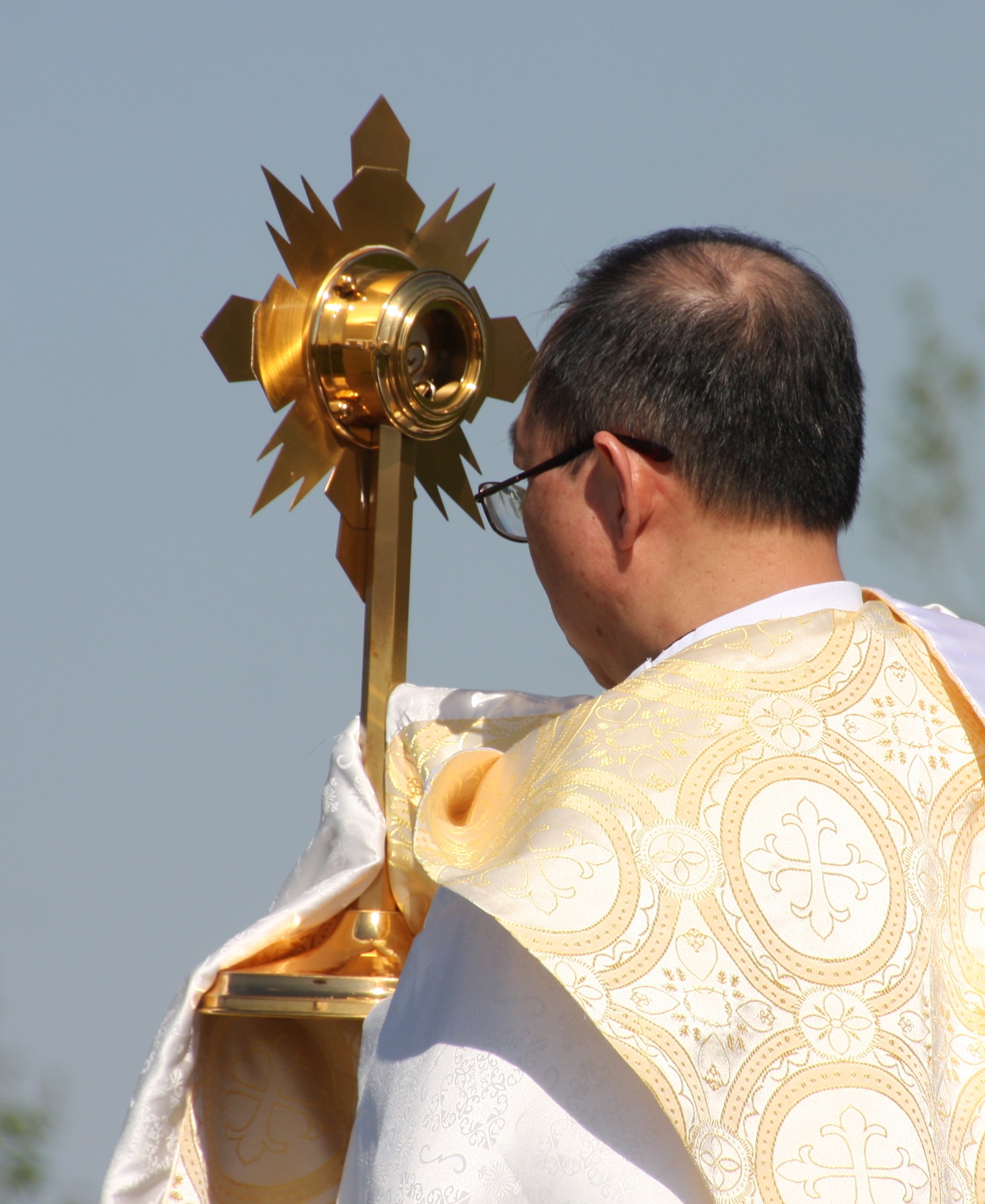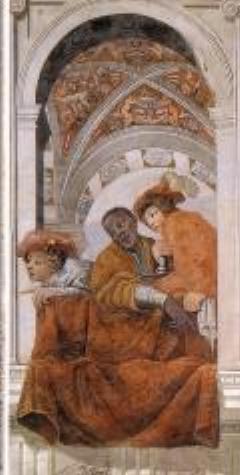|
Knights Of The Redeemer
The Knights of the Redeemer were a Roman Catholic secular community, founded in 1608 by Vincenzo I Gonzaga, Duke of Mantua, Vincenzo I Gonzaga, on the occasion of the marriage of his eldest son Francesco IV Gonzaga, Duke of Mantua, Francesco IV Gonzaga with Margaret of Savoy, Vicereine of Portugal, Margaret of Savoy. It was founded in honour of the Blood of Christ, a relic of which has been venerated since time immemorial in the Mantua Cathedral. The emblems of the order consisted of a red silk robe and a golden necklace with a medal on which were figured three drops of blood in a monstrance. The duke was invested with these insignia by his son, Ferdinando Gonzaga, Duke of Mantua, Ferdinando Gonzaga, and with the approbation of Pope Paul V proclaimed Grandmaster (order), grand master of the order, a dignity inherited by his successors in the duchy. The duke in turn distributed the same insignia to fourteen knights chosen from the highest nobility of Mantua and the neighbouring ... [...More Info...] [...Related Items...] OR: [Wikipedia] [Google] [Baidu] |
Vincenzo I Gonzaga, Duke Of Mantua
Vincenzo Ι Gonzaga (21 September 1562 – 9 February 1612) was the ruler of the Duchy of Mantua and the Duchy of Montferrat from 1587 to 1612. Biography Born 21 September 1562, Vincenzo was the only son of Guglielmo Gonzaga, Duke of Mantua, and Archduchess Eleanor of Austria. His maternal grandparents were Ferdinand I, Holy Roman Emperor, and Anna of Bohemia and Hungary. In 1582, Vincenzo murdered in cold blood the brilliant young Scottish polymath James Crichton, an employee of his father's court, of whom Vincenzo had become crazed with jealousy. Vincenzo was a major patron of the arts and sciences, and turned Mantua into a vibrant cultural centre. On 22 September 1587, Vincent was crowned the fourth Duke of Mantua, with a glitzy ceremony in which were present the highest authority of the duchy to pay homage to the new Duke of Mantua: he then moved with a ride through the city streets. Vincenzo employed the composer Claudio Monteverdi and the painter Peter Paul Rubens. In 159 ... [...More Info...] [...Related Items...] OR: [Wikipedia] [Google] [Baidu] |
Francesco IV Gonzaga, Duke Of Mantua
Francesco IV Gonzaga (7 May 1586 – 22 December 1612) was Duke of Mantua and Montferrat between 9 February and 22 December 1612. Biography Born in Mantua, he was the eldest son of Duke Vincenzo I and Eleonora de' Medici. In 1607, Claudio Monteverdi dedicated his opera ''L'Orfeo'' to Francesco. The title page of the opera bears the dedication "Al serenissimo signor D. Francesco Gonzaga, Prencipe di Mantoua, & di Monferato, &c." Francesco became Duke upon his father's death on 9 February 1612. He died at Mantua on 22 December 1612 without male heirs. He was succeeded by his brother Ferdinand; however, Charles Emmanuel I, Duke of Savoy, the father of Francesco's wife Margaret of Savoy, disputed this, leading to the War of the Montferrat Succession (1613–1617). Family On 19 February 1608 he married in Turin, Margaret of Savoy (1589–1655), daughter of Charles Emmanuel I, Duke of Savoy. They had: * Maria (29 July 1609 – 14 August 1660); married in 1627 Charles II of Gonza ... [...More Info...] [...Related Items...] OR: [Wikipedia] [Google] [Baidu] |
Margaret Of Savoy, Vicereine Of Portugal
Margaret of Savoy (28 April 1589 – 26 June 1655) was the last Habsburg Vicereine of Portugal from 1634 to 1640.Raviola, Blythe Alice (2016). "The three Lives of Margherita of Savoy-Gonzaga, Duchess of Mantua and Vicereine of Portugal." In Cruz, Anne J. and Stampino, Maria Galli (eds). ''Early Modern Habsburg Women : Transnational Contexts, Cultural Conflicts, Dynastic Continuities'', pp. 58-76. Routledge. In Portuguese she is known as ''Duquesa de Mântua'', being by marriage the Duchess of Mantua and Montferrat. She was also regent of Montferrat during the minority of her daughter from 1612. Biography Duchess of Montferrat She was born in Turin, as the fourth child of Charles Emmanuel I, Duke of Savoy (1562–1630) and Infanta Catalina Micaela of Spain, the daughter of Philip II of Spain. She was married to the future Francis IV, Duke of Mantua (1586–1612) and Montferrat on 19 February 1608. The wedding was celebrated in Turin. In 1612 Margaret's husband succeeded his f ... [...More Info...] [...Related Items...] OR: [Wikipedia] [Google] [Baidu] |
Blood Of Christ
Blood of Christ, also known as the Most Precious Blood, in Christian theology refers to the physical blood actually shed by Jesus Christ primarily on the Cross, and the salvation which Christianity teaches was accomplished thereby, or the sacramental blood (wine) present in the Eucharist or Lord's Supper, which some Christian denominations believe to be the same blood of Christ shed on the Cross. The Catholic Church, Eastern Orthodox Church, the Oriental Orthodox churches, the Assyrian and Ancient Churches of the East, and Lutherans, together with high church Anglicans, know this as the real presence of Christ in the Eucharist. The Catholic Church uses the term ''transubstantiation'' to describe the change of the bread and wine into the body and blood of Christ. The Eastern Orthodox Churches used the same term to describe the change, as in the decrees of the 1672 Synod of Jerusalem, and the Catechism of St. Philaret (Drozdov) of Moscow. The Lutheran churches follow the teac ... [...More Info...] [...Related Items...] OR: [Wikipedia] [Google] [Baidu] |
Relic
In religion, a relic is an object or article of religious significance from the past. It usually consists of the physical remains or personal effects of a saint or other person preserved for the purpose of veneration as a tangible memorial. Relics are an important aspect of some forms of Buddhism, Christianity, Islam, shamanism, and many other religions. ''Relic'' derives from the Latin ''reliquiae'', meaning "remains", and a form of the Latin verb ''relinquere'', to "leave behind, or abandon". A reliquary is a shrine that houses one or more religious relics. In classical antiquity In ancient Greece, a polis, city or Greek temple, sanctuary might claim to possess, without necessarily displaying, the remains of a venerated hero as a part of a Greek hero cult, hero cult. Other venerable objects associated with the hero were more likely to be on display in sanctuaries, such as spears, shields, or other weaponry; chariots, ships or Figurehead (object), figureheads; furniture such a ... [...More Info...] [...Related Items...] OR: [Wikipedia] [Google] [Baidu] |
Mantua Cathedral
Mantua Cathedral () in Mantua, Lombardy, northern Italy, is a Roman Catholic cathedral dedicated to Saint Peter. It is the seat of the Bishop of Mantua. History An initial structure probably existed on the site in the Early Christian era, which was followed by a building destroyed by a fire in 894. It was quickly re erected in Protoromanesque style. The church was rebuilt beginning in 1132 by Bishop Manfredo, initially in the Romanesque style. The bell tower was finished before 1150. The current church stands on the Romanesque church of San Pietro, of which only some wall structures and the bell tower are preserved. It was rebuilt in 1395–1401 with the addition of side chapels and a Gothic west front, which can still be seen in a sketch by Domenico Morone (preserved in the Palazzo Ducale of Mantua). In 1395 Francesco I Gonzaga, to celebrate the birth of his firstborn son, ordered the construction of a new facade in the Gothic style. It was carried out by the Venetian ... [...More Info...] [...Related Items...] OR: [Wikipedia] [Google] [Baidu] |
Monstrance
A monstrance, also known as an ostensorium (or an ostensory), is a vessel used in Roman Catholic, Old Catholic, High Church Lutheran and Anglican churches for the display on an altar of some object of piety, such as the consecrated Eucharistic Sacramental bread (host) during Eucharistic adoration or during the Benediction of the Blessed Sacrament. A monstrance may also serve as a reliquary for the public display of relics of some saints."" New Advent Catholic Encyclopedia. Retrieved on 2014-11-16. The word ''monstrance'' comes from the word , while the word ''ostensorium'' comes from the Latin word . Either term, each expressing the concept of "showing", can refer to a vessel intended for the exposition of the < ... [...More Info...] [...Related Items...] OR: [Wikipedia] [Google] [Baidu] |
Ferdinando Gonzaga, Duke Of Mantua
Ferdinand I Gonzaga (26 April 1587 – 29 October 1626) was Duke of Mantua and Duke of Montferrat from 1612 until his death. Biography Born in Mantua, he was the son of Vincenzo I and Eleonora de' Medici. On 10 December 1607, he was appointed a cardinal by Pope Paul V at the age of 20. A few years after his elder brother, Duke Francesco IV, died in 1612 without male heirs, he renounced the ecclesiastical career on 16 November 1615, and succeeded his brother in both the Duchy of Mantua and the Duchy of Montferrat. In 1616, he secretly married Camilla Faà di Bruno, whom he divorced in the same year. Their son Francesco Giacinto Teodoro Giovanni Gonzaga, although accepted at court, was not made Ferdinando's heir. He died of the plague at the age of 14, during the 1630 siege of Mantua. On 16 February 1617, Ferdinando married Caterina de' Medici (1593–1629), the daughter of Ferdinand I, Grand Duke of Tuscany. They had no children. Ferdinand Gonzaga died in 1626. His you ... [...More Info...] [...Related Items...] OR: [Wikipedia] [Google] [Baidu] |
Pope Paul V
Pope Paul V (; ) (17 September 1552 – 28 January 1621), born Camillo Borghese, was head of the Catholic Church and ruler of the Papal States from 16 May 1605 to his death, in January 1621. In 1611, he honored Galileo Galilei as a member of the papal Accademia dei Lincei and supported his discoveries. In 1616, Pope Paul V instructed Cardinal Robert Bellarmine to inform Galileo that the Copernican theory could not be taught as fact, but Bellarmine's certificate allowed Galileo to continue his studies in search for evidence and use the geocentric model as a theoretical device. That same year Paul V assured Galileo that he was safe from persecution so long as he, the Pope, should live. Bellarmine's certificate was used by Galileo for his defense at the trial of 1633. Trained in jurisprudence, Borghese was made Cardinal-Priest of Sant'Eusebio and the Cardinal Vicar of Rome by Pope Clement VIII. He was elected as Pope in 1605, following the death of Pope Leo XI. Pope ... [...More Info...] [...Related Items...] OR: [Wikipedia] [Google] [Baidu] |
Grandmaster (order)
Grand Master (; ; ; ; ) is a title of the supreme head of various orders, including chivalric orders such as military orders and dynastic orders of knighthood. The title also occurs in modern civil fraternal orders such as the Freemasons, the Odd Fellows, and various other fraternities. Additionally, numerous modern self-styled orders attempt to imitate habits of the former bodies. History Medieval era In medieval military orders such as the Knights Templar or the Livonian Brothers of the Sword, the Grand Master was the formal and executive head of a military and feudal hierarchy, which can be considered a "state within the state", especially in the crusader context ''sensu lato'', notably aimed at the Holy Land or pagan territories in Eastern Europe, as well as the reconquista in the Iberian Peninsula. If an order is granted statehood and thus widely considered sovereign, the Grand Master is also its Head of State. If within the Holy Roman Empire, a Reichsfürst and ... [...More Info...] [...Related Items...] OR: [Wikipedia] [Google] [Baidu] |
Emperor Joseph I
Joseph I (Joseph Jacob Ignaz Johann Anton Eustachius; 26 July 1678 – 17 April 1711) was Holy Roman Emperor and ruler of the Habsburg monarchy from 1705 until his death in 1711. He was the eldest son of Leopold I, Holy Roman Emperor from his third wife, Eleonor Magdalene of Neuburg. Joseph was crowned King of Hungary at the age of nine in 1687 and was elected King of the Romans at the age of eleven in 1690. He succeeded to the thrones of Bohemia and the Holy Roman Empire when his father died. Joseph continued the War of the Spanish Succession, begun by his father against Louis XIV of France, in an attempt to make his younger brother Charles (later Emperor Charles VI) King of Spain. In the process, however, owing to the victories won by his military commander, Prince Eugene of Savoy, he did succeed in establishing Austrian hegemony over Italy. Joseph also had to contend with a protracted revolt in Hungary, fomented by Louis XIV. Neither conflict was resolved until the Treaty o ... [...More Info...] [...Related Items...] OR: [Wikipedia] [Google] [Baidu] |









